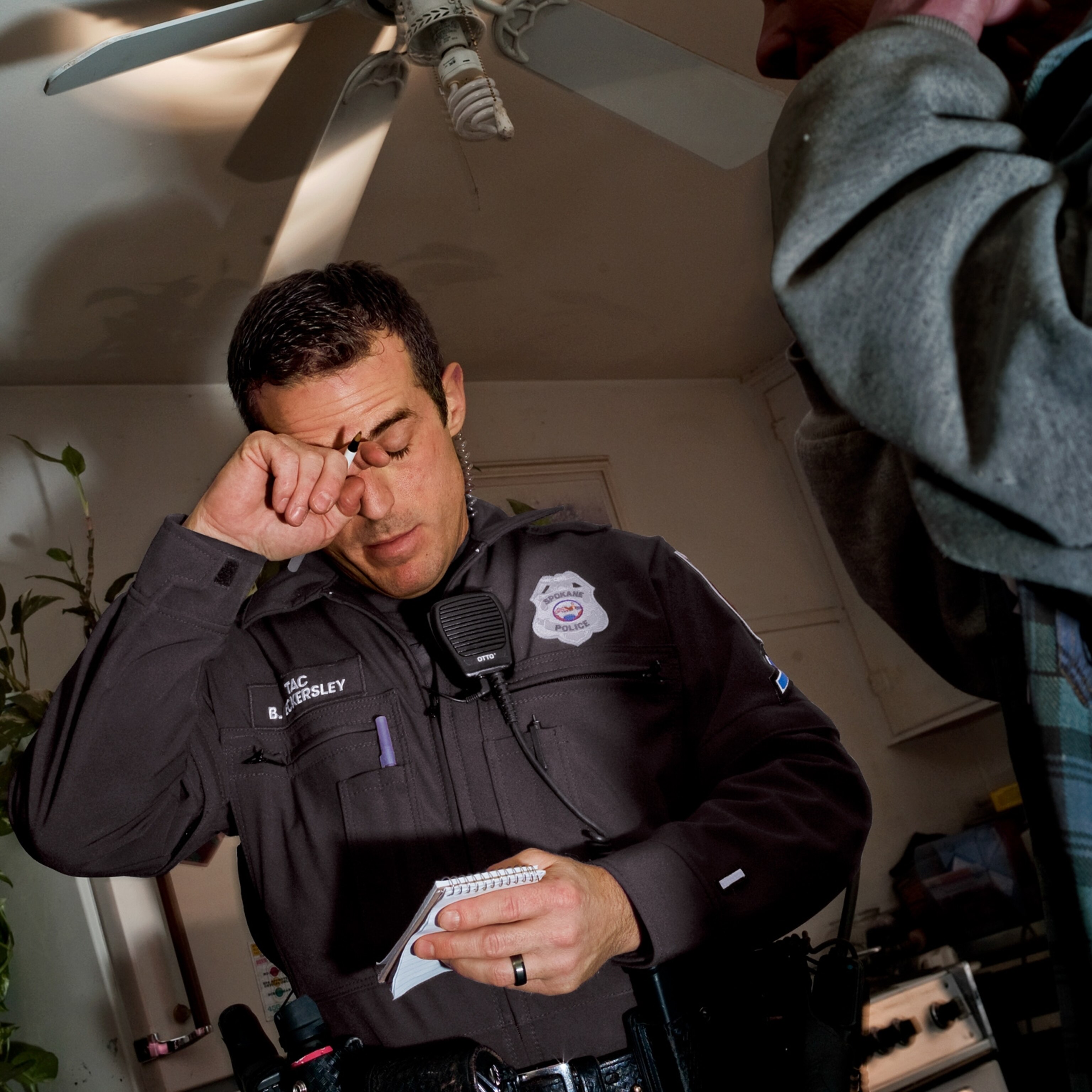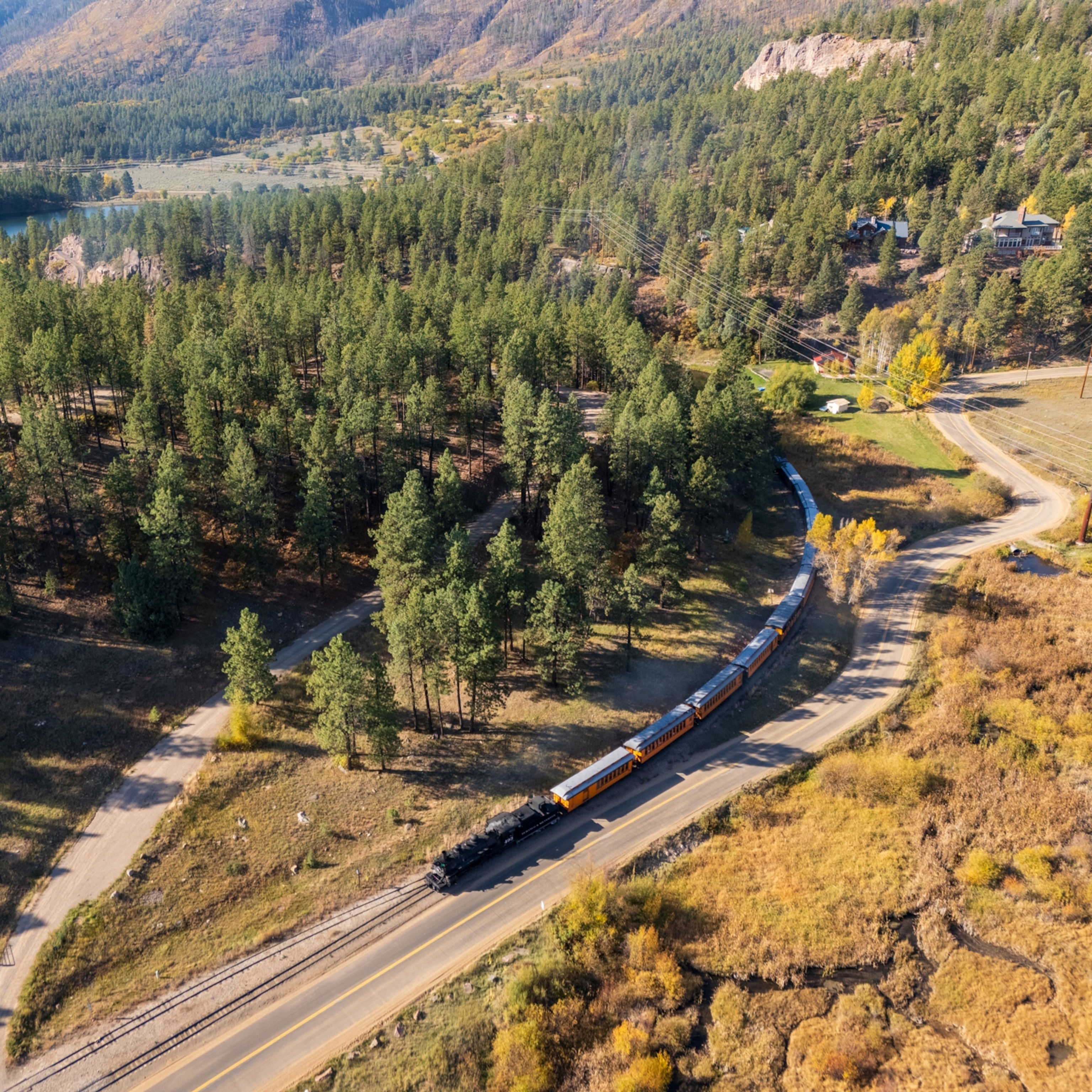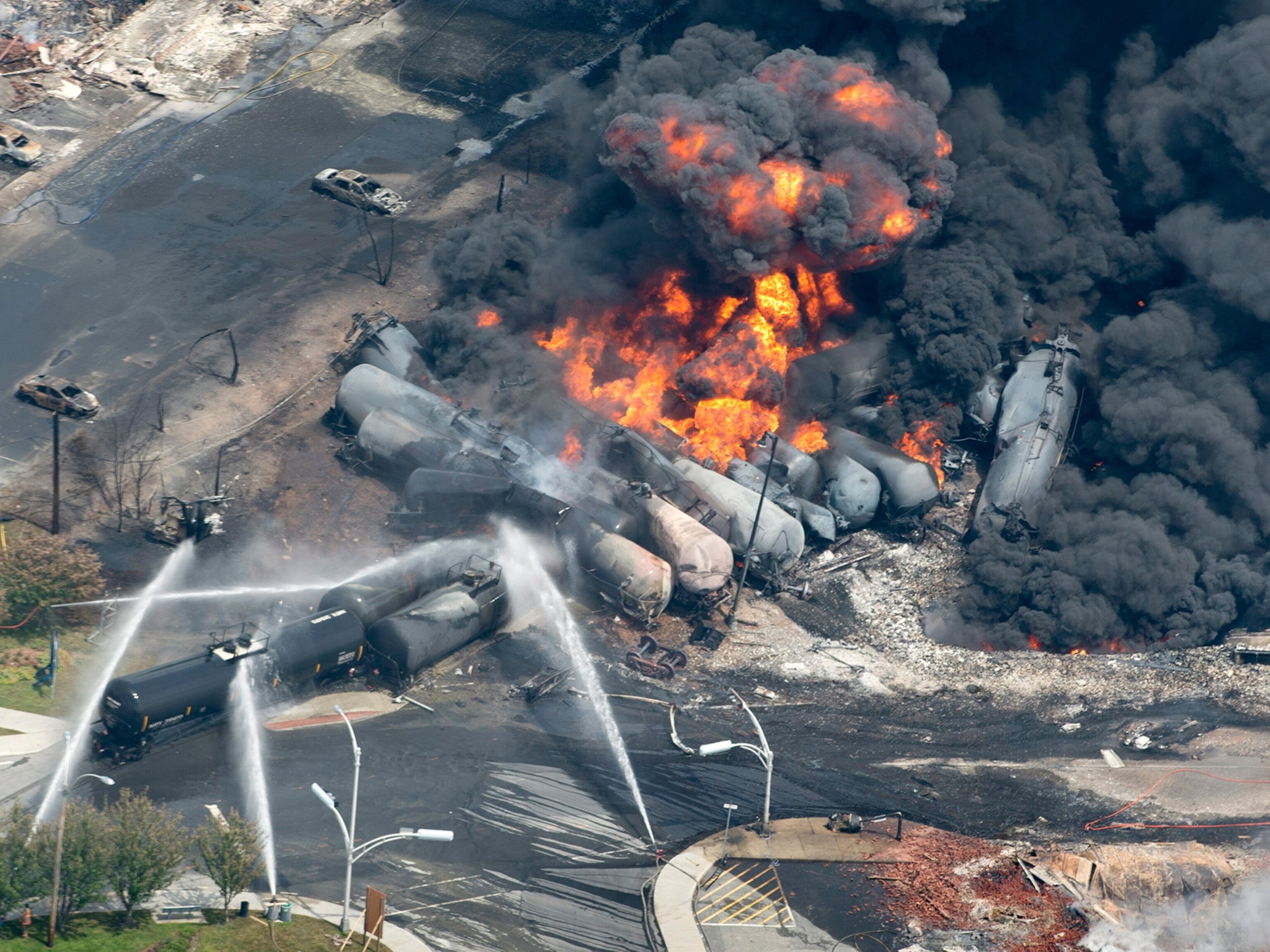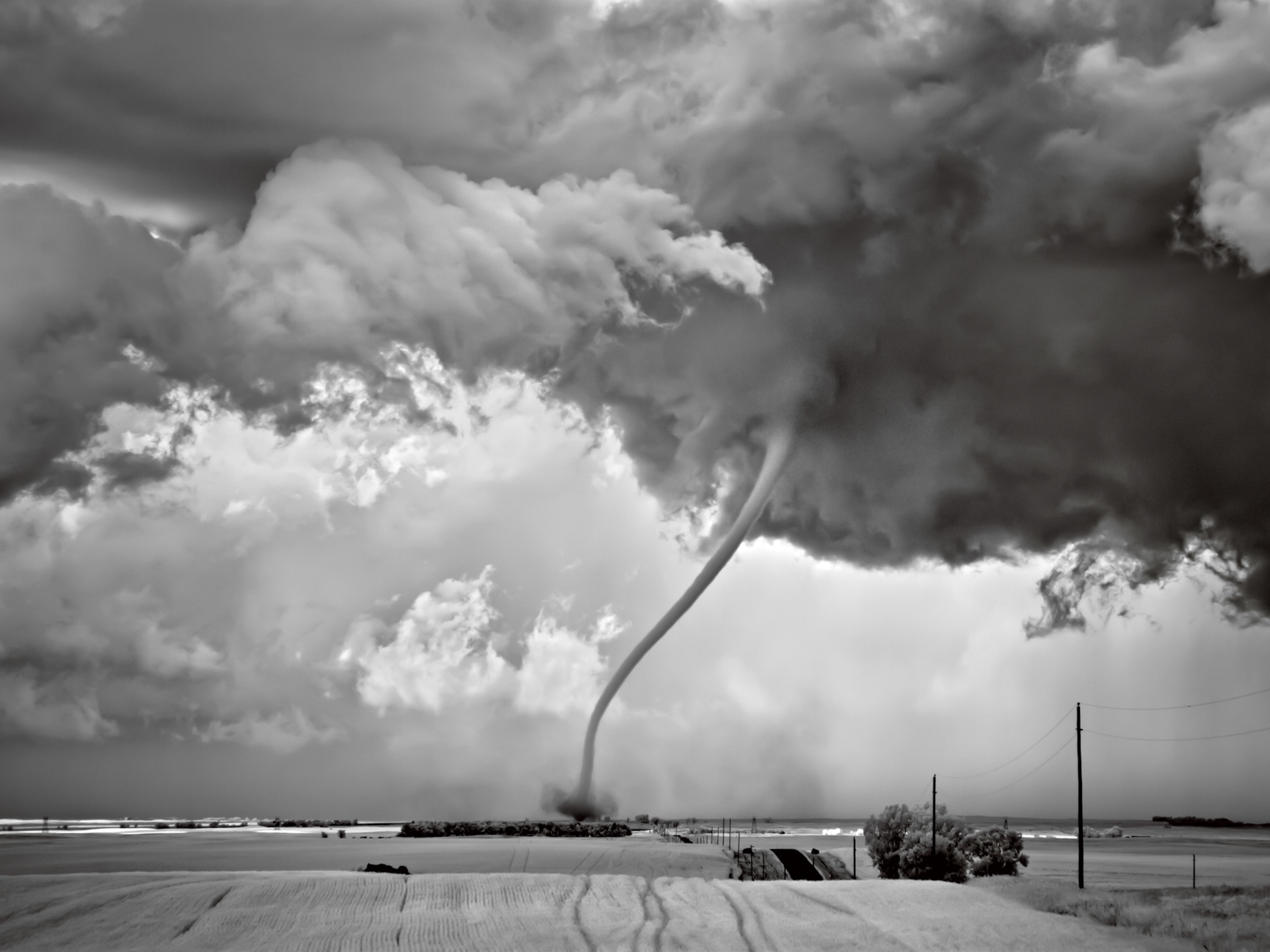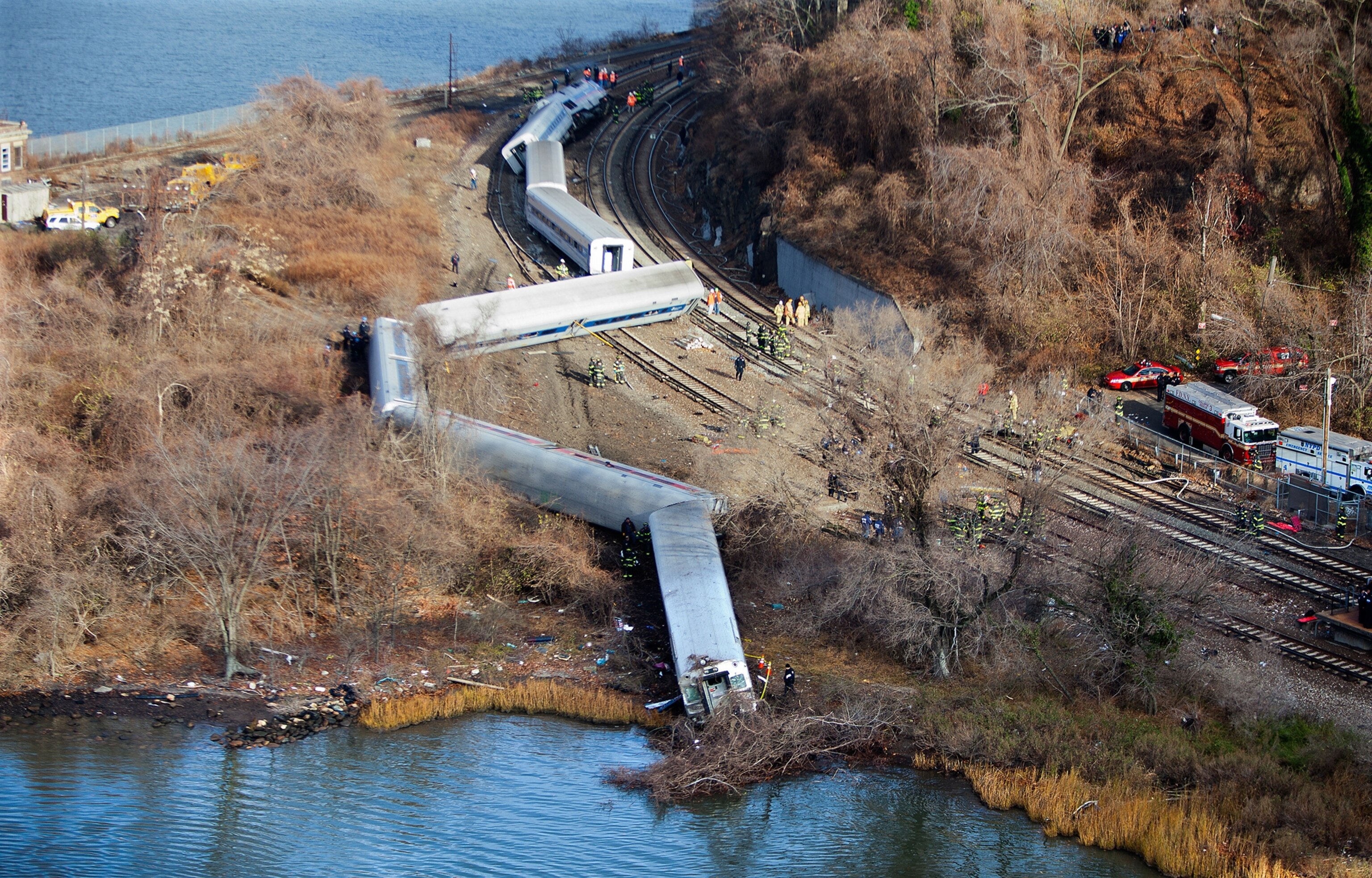
New York Train Derailment Highlights Evolving Rail Safety and Science
Train expert says new technology may improve safety soon.
This weekend's deadly train derailment in New York is a local story that shines a light on the broader issue of how railroad safety and technology are still evolving.
On the morning of December 1, a Metro North commuter train derailed in the Bronx, about ten miles (16 kilometers) north of Manhattan's Grand Central Terminal. Four people were killed and at least 67 were injured, after seven of the train's eight cars jumped off its tracks on a curve near the Harlem River.
Investigators are looking into the cause of the accident, which has disrupted service on the Hudson Line. The train had been ferrying about 150 passengers into New York City from Poughkeepsie, New York.
According to the National Transportation Safety Board, the train was going 82 miles per hour (132 kilometers per hour) in a curve that was only designed for 30 miles per hour (48 kilometers per hour).
National Geographic spoke with Robert Halstead, president of the National Association of Railroad Safety Consultants and Investigators, about the derailment and train safety. An electrical engineer by training, Halstead works as a railroad accident investigator through a private practice in Syracuse, New York.
With a string of deadly train derailments in the news this year, some have suggested that derailments are up. Is that true?
Train derailments have trended up over the last couple of years. Human factors are frequently found to be a contributing part, sometimes a causal part. This includes improper train handling and fatigue. You can also have technical failure regarding the signal system, the track, or other equipment.
But certainly we've seen human factors ... such as with the runaway train in Canada [in July] and others. Railroads do have operating rules that they train employees on, and they have examiners tasked with ensuring compliance in the field.
The industry is in the process of implementing positive train control, or PTC, which is a huge undertaking. What that system will do when it is fully functional is allow an engineer to operate the train, but if the engineer fails to operate in accordance with signal indication, the system will intervene and stop the train.
What's the timeline for that positive train control system?
Right now, it will be required only on lines that host passenger trains or carry TIH, toxic inhalation hazards, in the U.S. Some European countries have something similar, as does China.
In the U.S., the implementation is [planned for] December 31, 2015, but the rail industry has applied to Congress to extend it to the end of 2020. My gut feeling is that will probably occur.
Do derailments often happen on curves, as was the case with Sunday's accident in New York?
Curves have maximum authorized speeds that are contained within employee timetables, which all crews are required to be informed of. Many of the speeds are also posted.
The Federal Railroad Administration (FRA) grades track by classes one through nine and sets maximum speed limits for them. One is ten miles (16 kilometers) per hour and nine is around 200 miles (322 kilometers) per hour.
For a given curve there will also be a super elevation required, which means that the outer rail has to be maintained slightly higher than the inside rail.
How often are derailments related to brake failures, which seemed to be suggested by the engineer involved in this weekend's accident?
In my experience that's very rare. Trains have at least three different types of braking systems on board, two of which are independent.
You have a system called the automatic air brake, which works on the locomotive and the rest of the train, then you have the independent air brake that works only on the locomotive. Then you have the dynamic brake, that is not air-based and works only on the locomotive. That's the brake most crews use most of the time.
Locomotives have a diesel engine on board, which turns a generator that converts rotational energy from the engine to electrical energy. That is fed to the traction motor, one for each powered axle. Dynamic braking disconnects wires going to the traction motor, and connects them to a resistant grid. That turns the motor into a generator, which provides a retarding effect [which slows the train down] without brake shoes, kind of like a jake brake on a truck.
In addition to interviewing survivors and witnesses, how are derailments investigated?
Investigators will be starting at the point of derailment and working backward to see if there is any problem with the curve geometrically. They'll find the first mark on the rail at which a wheel climbed off it; that is the POD, or point of derailment.
Then you start working backward to see if there is any irregularity in the track that might have caused it.
[New York Governor Andrew Cuomo] has announced that excessive speed was likely an issue [in Sunday's accident]. It could be. Investigators will check the train's two recorders, one from the locomotive and one from the cab car that was leading the train, and compare the train's speed to the maximum authorized speed of the curve. The engineer was in the first coach, controlling the locomotive via remote control. The locomotive was at the back of this train, pushing the coaches.
Investigators will try to construct a timeline of actions.
How good are the chances of surviving a derailment as a passenger?
The FRA has done limited crash testing over the years on individual coaches, but there's not nearly the amount of crash-test data for full-size trains as there is for automobiles, because trains are just so ghastly expensive to smash up. Still, the FRA has put a lot of work into passenger survivability. They have a group they dispatch after accidents like this. They look at what surfaces people were injured on and so forth, and they make recommendations on how to better protect people.
Trains don't have seatbelts, so people are going to go flying.
Why don't trains have seatbelts?
At this time they're not federally required. It's the same with school buses, though I think that's changing.
If a rider is in a derailment, what should they do?
The advice on what to do is similar to what they tell you to do in an airplane: Put your head between your legs. You can try to grab something and hug it close to your body. You have little to zero advance notice with these things, so it makes it tough.
Have you seen changes made after such accidents?
I have seen some changes, sometimes in operation rules. I worked on the [2008] Chatsworth, California, train accident. The engineer was texting, and went by a stop symbol and into a freight train. That was one of the principal accidents that precipitated the PTC system.
We look at accidents with an eye toward improving things, either equipment or operational procedures or both.

